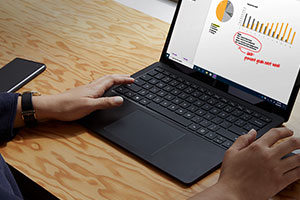3 ways to better defend your business against ransomware
Managing corporate IT has always been endlessly challenging, as every aspect is constantly evolving – and perhaps nothing evolves quite so quickly...

As business IT leaders begin to set their priorities for the coming year, many of them are coming to a common consensus – that it will be important moving forward to invest in security fortification. Digital transformation and the changing workplace are shining a light on two intersecting trends: the variety and volume of endpoint devices, and the need to secure data and systems wherever they reside.
In our research, we’ve found that improving security is consistently named as a top driver for companies’ IT investments in the year ahead. In fact, it’s been rising steadily in importance over the last three years. Securing endpoints and the data they contain has proven to be an urgent priority. In the 2019 edition of IDG’s Digital Business survey, only 27% of organizations said that they’ve already completed a strategy for data protection; the rest are still working on it. Those who lag in this area are likely to fall behind as the volume and scope of endpoint devices continue to grow.
So what should companies’ strategies look like moving forward? As security becomes table stakes for digital business, IT and security teams are working more closely than ever to identify threats and vulnerabilities proactively. Nearly two-thirds of respondents in the latest “State of the CIO” survey say security is now tightly integrated with IT strategy. This collaboration is likely to impact all technology purchasing decisions, including desktops, laptops, and other endpoint devices, which present some of the most vulnerable entry points to bad actors.
It’s clear that when it comes to endpoint security strategy, the status quo is simply not good enough. At most organizations, the primary protection that most employees use for their devices, as well as their email and other accounts, is just a password. We’ve known for a long time, though, that passwords are not the best solution to the problem of authentication. Millions of username and password combinations have been stolen from websites. Your users may even be using some of them on your network, creating easy points of entry for attackers.
It’s time for businesses to adopt new strategies – and Microsoft and Zones can help. Biometric authentication products, for instance, are growing in both availability and sophistication. As one example, Windows 10 now includes Windows Hello for Business, which authenticates the user with a biometric or a PIN. These credentials are tied to the device and stored in the TPM. This means you will need different PINs for different devices, but it limits the damage that can come from a compromised PIN.
At Zones, we’re working hard every day to help businesses like yours adopt such security strategies. We’ve always had a strong focus on Security Fortification – we know that your data is your No. 1 priority, and we know the importance of keeping it safe. Thanks to our expertise, our experience, and our strong relationship with partners like Microsoft, we are uniquely well positioned to help you tackle the challenges of endpoint security.
Ready to get started? Connect with a Zones consultant today and get to work on a safe, secure future for your business.

Managing corporate IT has always been endlessly challenging, as every aspect is constantly evolving – and perhaps nothing evolves quite so quickly...

It’s no secret that security fortification is top of mind for IT leaders these days. For modern-day businesses, cybersecurity has moved well beyond...

At countless companies around the world, IT leaders have made it a priority to focus on workplace modernization. But in many cases, they overlook a...